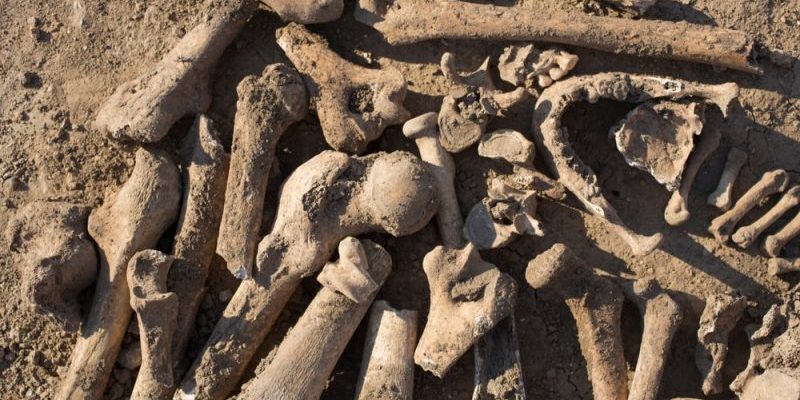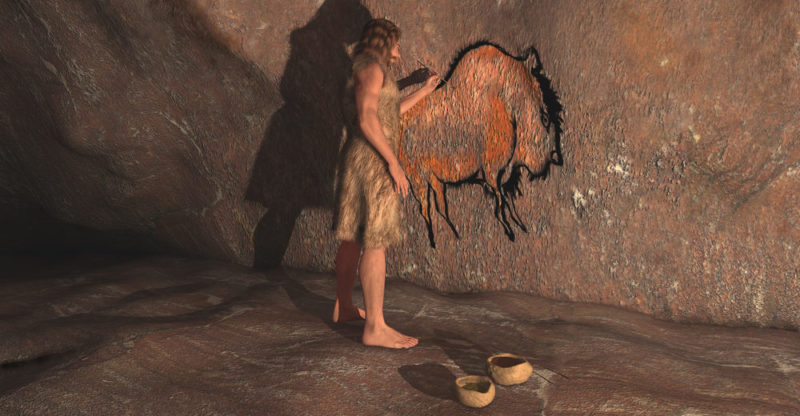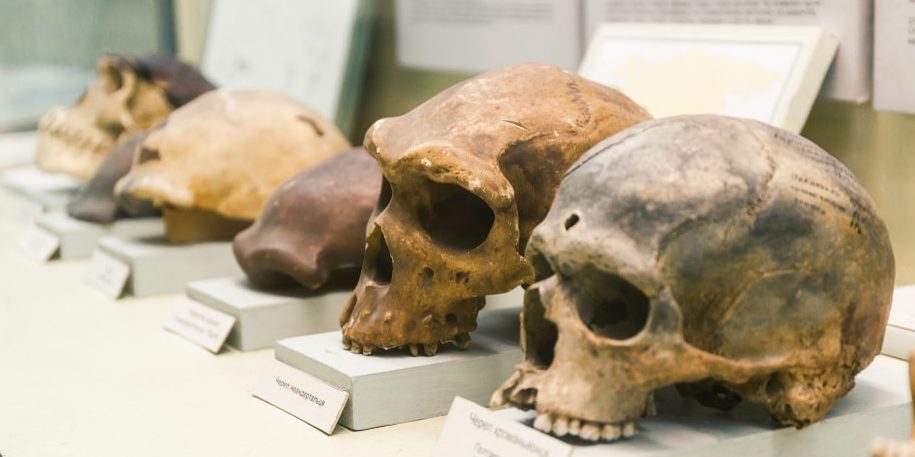We explain what Homo sapiens is, when and where it arose and how it is classified. Also, what are its characteristics and its evolution.
What is Homo sapiens ?
Homo sapiens is the scientific name for our species, humans . Our species is the last to emerge from the genus Homo, that is, from hominids , descendants of a species of primates that took a different evolutionary course by descending from the trees and beginning to walk on its hind legs.
Like the other hominids, our species is characterized by its intelligence capacity that allows it to develop both material tools (from spears and clubs to screwdrivers and revolvers) and intellectual (from spoken language and mathematics to quantum physics and economics ). which has allowed him to adapt the world to his biological and civilizing needs, changing the destiny of life on the planet forever. That is why it is the animal species that rules the world today.
The Homo sapiens long we refer to our species with the generic "man" , but this term is deprecated since it is used for adult males, so it is preferred and advised the use of human , humanity or human beings .
What does Homo sapiens mean ?
The term Homo sapiens was assigned by the naturalist Carlos Linnaeus (1707-1778) , author of our method of nomenclature for species, to identify ours as the "wise men", that is, capable of knowing, of knowing, of deduce, to think in a complex way.
From there comes our self-determination as "rational animals" , capable of articulate language and complex thinking , unlike the rest of the known species.
When did Homo sapiens appear?

The Homo sapiens appears indisputably in Africa , sometime around 315,000 years ago, judging from the oldest remains found on the east coast of Morocco.
However, the oldest samples of modern behavior found in Africa date back to 165,000 years ago , in South Africa.
Be that as it may, the species emerged in Africa as an evolutionary step from archaic Homo sapiens or pre-sapiens , so contemporary Homo sapiens (formerly Homo sapiens sapiens ) is estimated to date back 40,000.
Where did Homo sapiens arise ?
As we have said, the point of origin of the species is uncertain, and in this regard there are two different hypotheses:
- Polygenism. It assumes that the human being emerged as a species interconnected to Homo erectus , in different regions at the same time, giving rise to different lineages or races. This theory is based on certain scientific findings and many pseudosciences.
- Monogenism. The most scientifically accepted version, proposes that the human being arose somewhere in Africa and then migrated to the entire world, giving rise to the various known races or lineages.
How is your zoological classification?

Human beings are eukaryotic and chordate beings , like all those who belong to the order of primates, where our closest living animal relatives are found today.
In this sense, we come from a superfamily of primates known as Hominoidea (hominoids), which contains two families: Hylobatidae (gibbons) and Hominidae (hominids), which in turn is divided into two subfamilies: Ponginae (orangutans) and Homininae , also composed of two tribes: Gorillini (Gorillas) and Hominini (hominins). Finally, within this last tribe there are two genera: Pan (chimpanzees) and Homo (humans).
What are its biological characteristics?
The Homo sapiens is a mammalian species bipedal , whose body has bilateral symmetry, and having sexual dimorphism: Females and males are distinguished by the naked eye by the characteristics of their bodies (women have breasts, small waists and vulva, men they lack breasts, are more muscular and have a visible penis).
The upper extremities of the human have grasping hands with opposable thumbs , which allows him to create and wield tools of various kinds. In addition, its skull has a brain capacity of 1600 cm 3 and has a mental capacity unmatched in known fauna.
The body of Homo sapiens has an average height of 1.75 meters (males) and 1.62 meters (females) and a weight of 75 kg and 61 kg (respectively). Its nutrition is omnivorous and its average planetary life span is 71.4 years.
What are its cultural characteristics?

The Homo sapiens is a gregarious species, ie, seeking the company of their peers . This influenced the development of physical and mental capacities that allow spoken language , being the only animal species capable of communicating through a system of signs and of inscribing it to last through various physical supports ( writing ).
Human societies have hierarchies and social arrangements that gave rise to politics and jurisprudence , so that our societies can govern themselves through abstract laws taught to future generations, debatable by the community itself and included in codes of laws (constitutions and other sacred books).
From an early age, Homo sapiens worshiped nature, imagining in it deities and mythical figures that later gave rise to religion. At present there are three great monotheistic religions and several polytheists, which are disputed among all the faith and the mystical life of the 7 and a half billion human beings that exist.
What are your life stages?
The human life cycle includes a 9-month gestation that culminates in childbirth . The newborn is defenseless and requires parental care during childhood (up to 12 years).
Later will come his stage of sexual maturation or puberty (around 15 years) , which culminates with his entry into adulthood in youth (more or less 21 years).
This will be followed by maturity (shortly before the age of 40) and finally old age (from the age of 60) .
Where does Homo sapiens live?

The Homo sapiens inhabited continents five , but focuses the bulk of its population in tropical and sub equatorial bands of the world as well as in temperate zones.
It prefers humid regions such as coasts , regions irrigated by nearby rivers and lakes , and to a lesser extent arid or desert areas.
The most densely populated countries in the world are: China (1,415 million), India (1,354 million), United States (326 million), Indonesia (266 million), Brazil (210 million), Pakistan (200 million), Nigeria (195 million) ) and Bangladesh (166 million).
What subspecies are there?
Formerly the modern human being ( Homo sapiens sapiens ) was differentiated from the so-called Neanderthal man ( Homo neardenthalensis ), when the latter was thought to be a subspecies of ours.
This theory was discarded, but it could be resumed after the discovery of Herto man ( Homo sapiens idaltu ) a supposed subspecies of Homo sapiens whose fossils were found in Ethiopia, in Herto Bouri in 1997.
Its name incorporates the term idaltu which means "old man ", since the three skulls found would date from 158,000 years ago.
How did the human being evolve?

The evolution of the human being occurred according to the following stages:
- Pre-Australopecines. The first hominids that descended from the trees and began to rise on their hind legs, about 7 million years ago.
- Australopecines. Also called Australopithecus , it was the first hominin to walk upright and flourished in theAfrican savannas 4-2.5 million years ago.
- Early Homo . It is not known from which australopecines the first members of the genus Homo arose, but they were capable of making stone tools, the most important being the species Homo habilis (2 million years ago).
- Population of Eurasia. It is the most confusing stage in human evolution, during which the species colonized other continents and left Africa, giving rise to new species of the genus Homo , as antecessor , and H. heidelbergensis , although for some scholars they are all summarized in Homo erectus .
- New African origins. The three most important species were born in the last stage of human evolution: neardenthaliensis , the Denisovan hominid and Homo sapiens , the only species that still survives.
Abubakr Conner brings a diverse skill set to our team, and covers everything from analysis to the culture of food and drink. He Believes: "Education is the most powerful weapon that exists to change the world." .
Leave a reply
Your email address will not be published. Required fields are marked *Recent post

Sport: What Is It, Types, Risks, Features, Characteristics and Examples

Dogs: Emergence, Features, Characteristics, Feeding and Breeds

Story: Definition, Elements, Structure, Features and Characteristics

